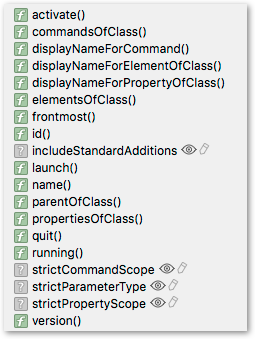
Rob, that is a very cool very helpful list of methods.
When you have time would you mind explaining how you generated this list?

Rob, that is a very cool very helpful list of methods.
When you have time would you mind explaining how you generated this list?